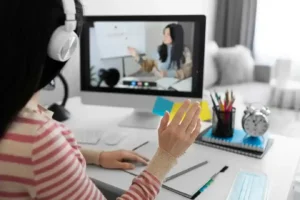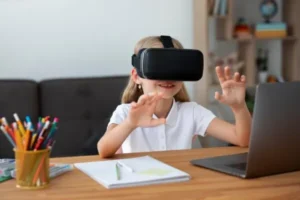The Education Blog
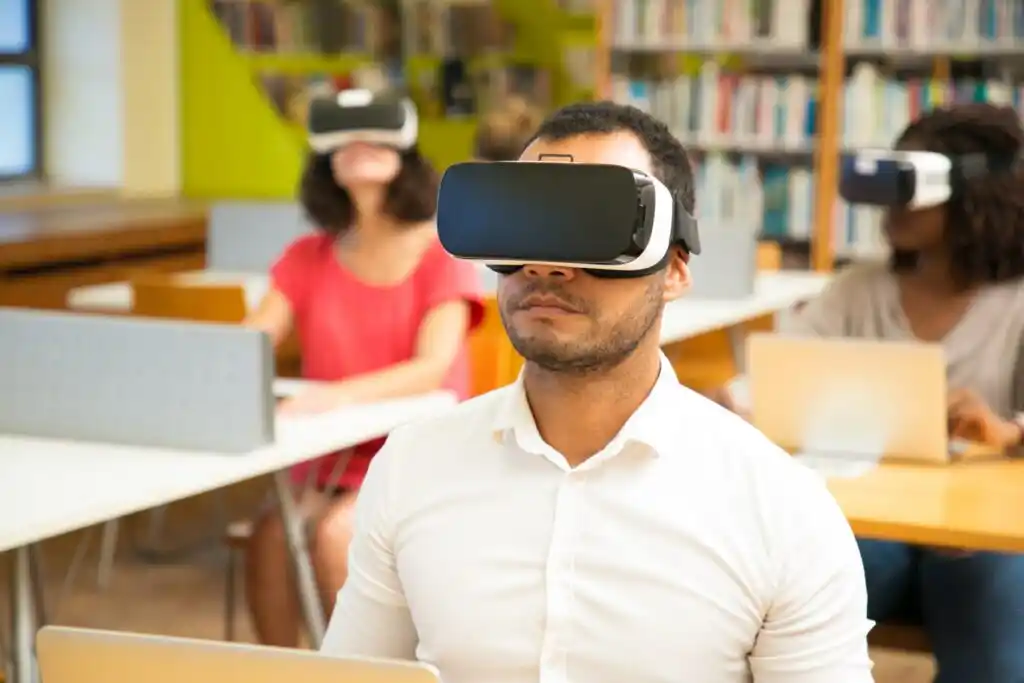
Virtual Reality in Education: How VR is Transforming Learning
Technology is changing student learning. Virtual Reality (VR) is leading the way in education. VR creates immersive experiences that connect theory with practice, making lessons more engaging and interactive.
With VR, students can take virtual field trips or conduct hands-on science experiments. Virtual learning powered by VR is significantly improving classroom experiences. In this article, we examine how immersive classroom technology is reshaping education. We’ll cover its benefits, challenges, and what the future may hold.
The Rise of Virtual Reality in Education
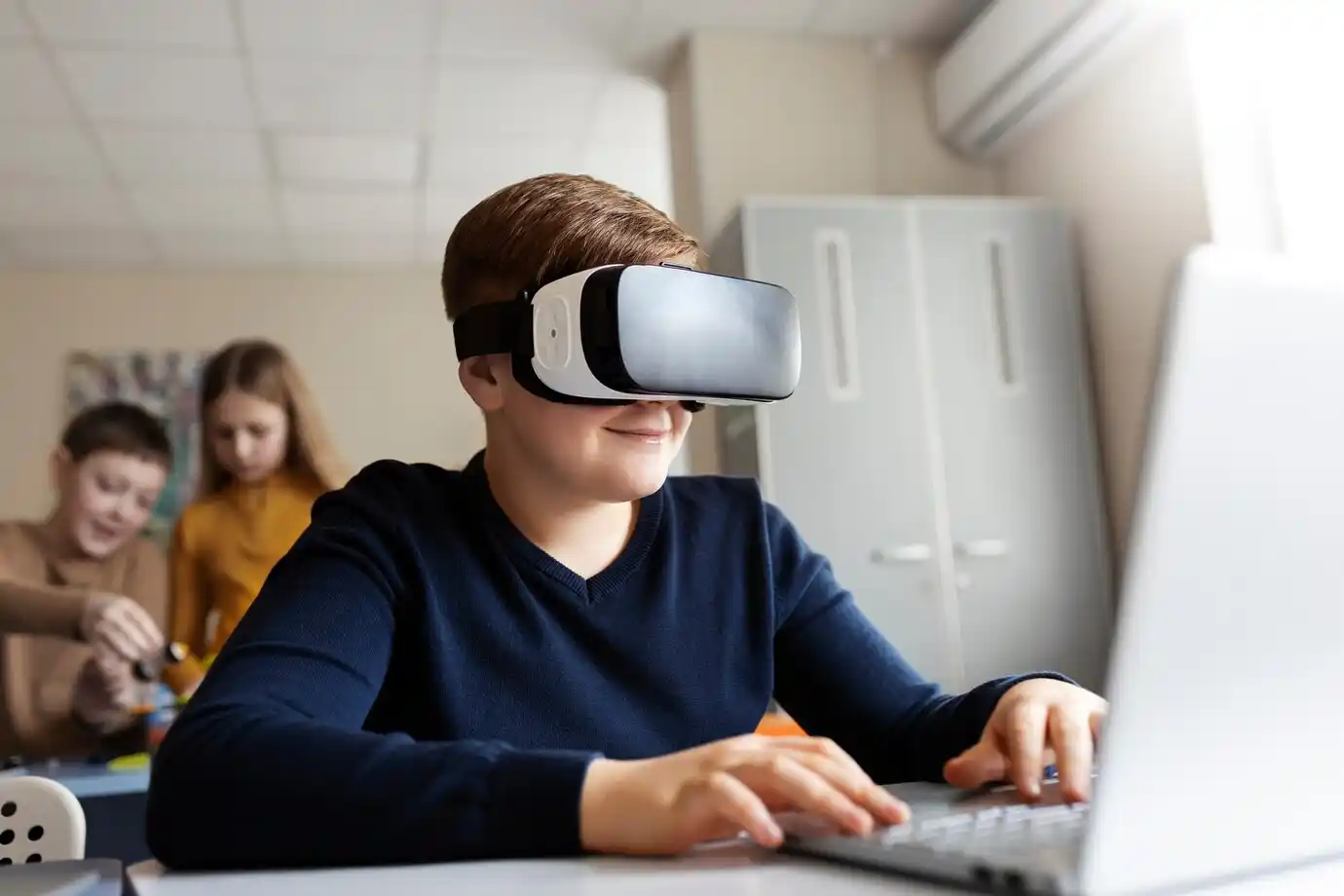
What is Virtual Reality in Education?
Virtual Reality (VR) in education means using computer-made simulations. These simulations immerse students in a 3D, interactive learning space. VR lets students experience lessons instead of just reading or listening. This is different from traditional learning methods.
Why is VR Gaining Popularity in Learning?
Several factors have contributed to the increasing adoption of VR in education:
- VR technology has advanced a lot. Now, affordable headsets like the Oculus Quest and HTC Vive make VR easier for everyone to access.
- More students want interactive learning. They learn best with hands-on experiences, not just by listening.
- Remote learning is essential. VR lets you learn outside a physical classroom, especially during global events.
- Adaptive VR systems help personalise education options while meeting various learning styles and boosting student engagement.
How Virtual Reality is Transforming Learning
1. Immersive Classroom Experiences
Traditional classrooms use textbooks and whiteboards. VR lets students immerse themselves in lessons. They can explore the Great Wall of China or dissect a human heart in 3D. VR boosts understanding through real-world experiences. Examples of VR in the Classroom:
- History: Virtual time travel to ancient civilisations.
- Science: Conducting chemistry experiments without real-world hazards.
- Geography: Exploring different ecosystems and planets in space.
2. Virtual Field Trips & Cultural Exploration
Travelling to historic sites or remote locations is often impractical. VR makes virtual field trips possible, allowing students to visit:
- Ancient ruins and historical landmarks.
- Museums and art galleries worldwide.
- Underwater ecosystems and outer space.
Platforms like Google Expeditions and National Geographic VR provide fun, immersive tours. They make learning exciting and engaging.
3. Hands-On Training & Skill Development
VR is particularly valuable for subjects requiring practical experience, such as:
- Medical Training: Virtual surgeries and anatomy simulations for medical students.
- Engineering & Mechanics: Learning to build and operate complex machinery.
- Vocational Skills: Hands-on training in construction, aviation, and automotive repair.
Osso VR and zSpace offer VR training for medical and tech workers.
4. Enhancing STEM Education
STEM (Science, Technology, Engineering, and Mathematics) subjects benefit significantly from VR-based learning tools.
- Physics Simulations: Experiencing the laws of motion in 3D environments.
- Mathematical Visualisation: Interacting with complex equations and geometric structures.
- Coding & Programming: Hands-on practice with virtual coding environments.
5. Special Education & Inclusive Learning
VR can help students with disabilities by providing tailored educational experiences:
- Autism Support: VR simulations teach social skills and interaction.
- Cognitive Training: Brain-training exercises for students with learning difficulties.
- Customised Environments: Adjustable learning settings for students with sensory sensitivities.
Benefits of Virtual Reality in Education
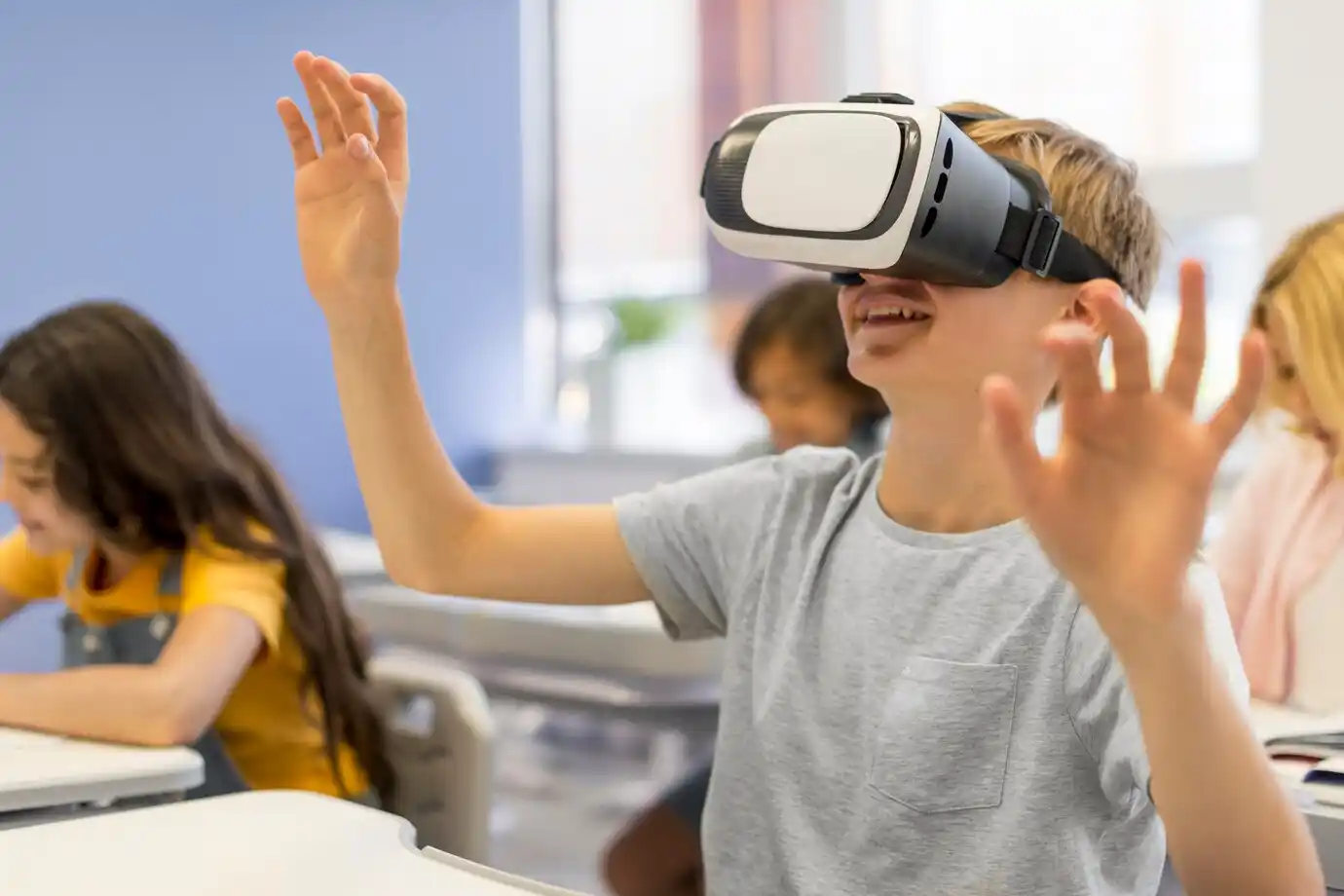
1. Increased Engagement & Retention
Studies show that interactive learning improves student attention and memory retention. VR’s immersive experiences make complex concepts easier to grasp and remember.
2. Safe & Controlled Learning Environments
VR allows students to practice high-risk scenarios safely:
- Medical students can perform surgeries without real-life risks.
- Aviation students can simulate flight training without danger.
- Chemistry students can conduct experiments without hazardous materials.
3. Enhanced Collaboration & Social Learning
VR allows students to interact with peers in virtual settings, boosting teamwork and communication skills. Platforms like Engage VR and AltspaceVR create virtual meeting spaces for global learning.
4. Personalised & Adaptive Learning
AI-powered VR systems change content to match each student’s pace and performance, creating personalised learning experiences that meet individual needs.
5. Bridging the Gap Between Theory & Practice
VR turns abstract ideas into tangible experiences. This helps students grasp how their lessons apply in the real world.
Challenges & Limitations of VR in Education
1. High Costs & Accessibility Issues
VR technology is becoming more affordable. However, many schools still find high-end headsets and software too expensive.
2. Need for Teacher Training
Educators need proper training to effectively integrate VR into their teaching methods.
3. Potential Health Concerns
Long VR use can lead to motion sickness, eye strain, and dizziness. So, it’s essential to have guidelines for safe use.
4. Internet & Hardware Requirements
VR learning needs fast internet and strong computers. Not every school has these resources.
The Future of VR in Education
1. AI-Integrated Virtual Learning Assistants
AI will drive brilliant VR tutors. They give real-time feedback and offer tailored lessons.
2. Expansion of Virtual Universities
Virtual universities allow students to earn degrees anywhere without having to go to a classroom.
3. More Affordable & Portable VR Devices
As technology improves, VR headsets will cost less and be easier to get. This will help more schools and colleges use them.
4. Augmented Reality (AR) & Mixed Reality (MR) Integration
Future learning environments will blend VR with AR/MR for seamless interactive experiences.
5. Government & Institutional Support
More governments and institutions will invest in VR education. They see its potential to improve learning around the world.
How Schools & Universities Can Implement VR
1. Start with Low-Cost VR Solutions
- Use Google Cardboard for affordable VR experiences.
- Implement mobile-based VR apps before investing in expensive headsets.
2. Train Educators for VR Integration
- Provide workshops and courses for teachers to learn VR-based teaching techniques.
- Partner with tech companies for educator-friendly VR platforms.
3. Select the Right VR Content
- Choose educational VR tools like Nearpod VR, Labster, and Mondly VR.
- Align VR modules with the school’s curriculum.
4. Ensure Safe & Responsible VR Use
- Set time limits to prevent VR fatigue.
- Monitor student engagement and adjust VR experiences accordingly.
Conclusion: The Future of Learning is Immersive
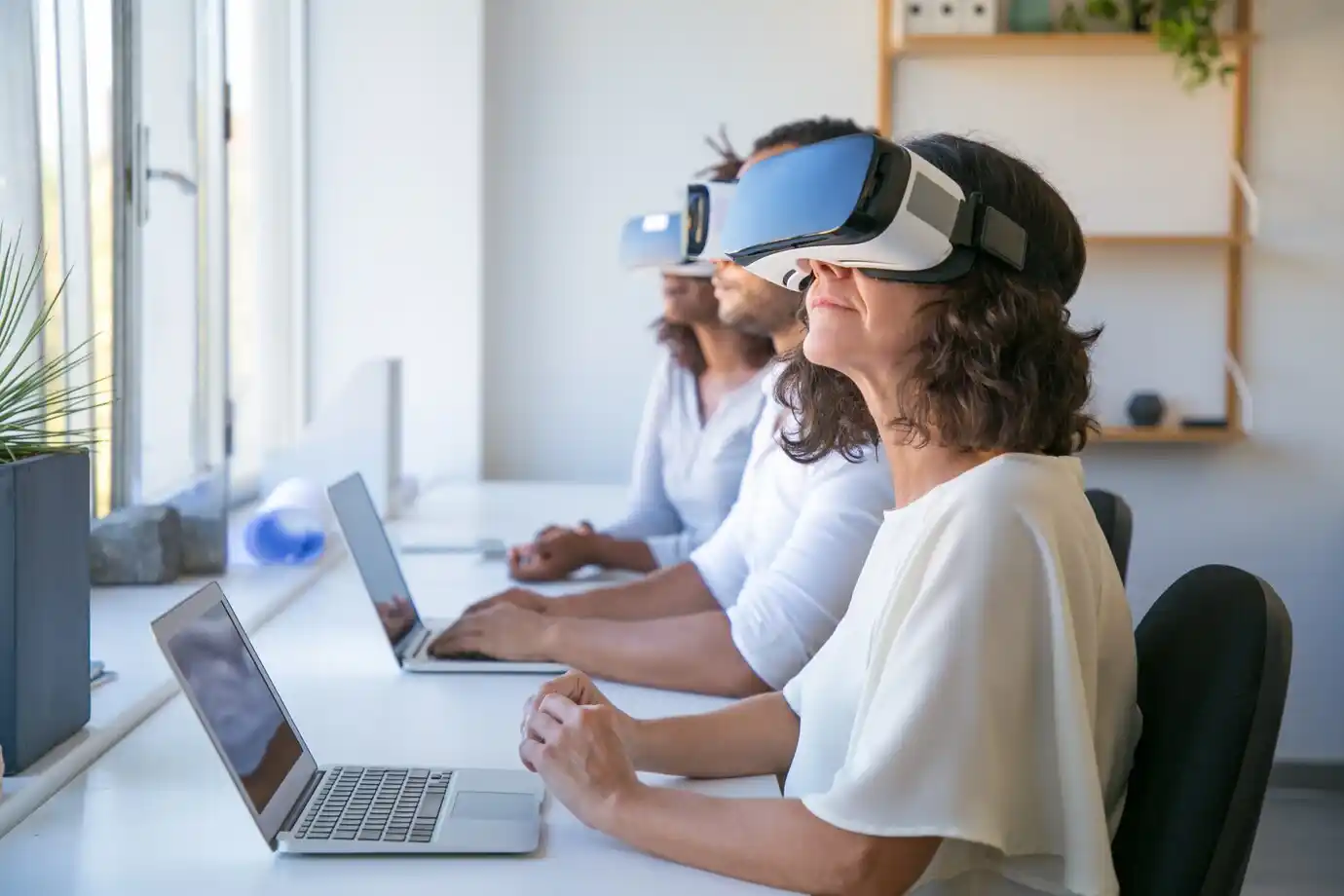
Virtual Reality in education is changing how we learn. It makes teaching more interactive, engaging, and accessible. Schools and universities use virtual learning and immersive technology. This helps students gain a deeper and more practical understanding of subjects.
VR education will expand as technology grows, creating new opportunities for learners everywhere. The future of learning is not just digital—it’s immersive, interactive, and boundless.



